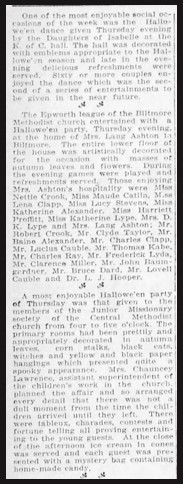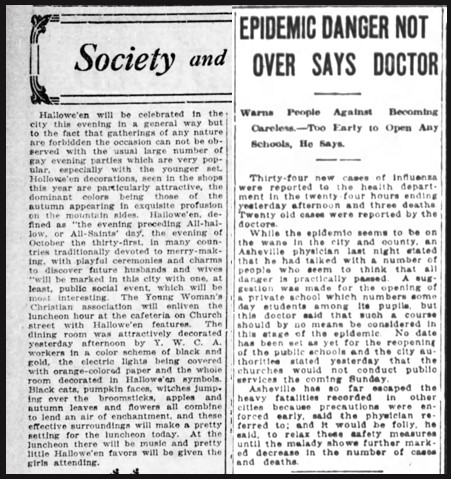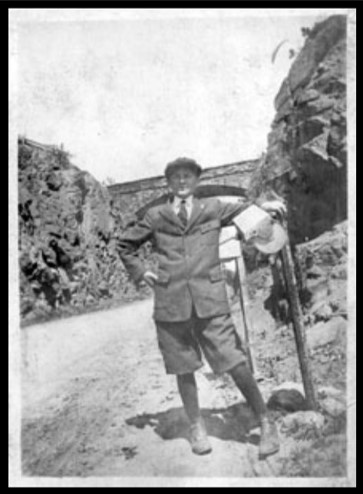
On this day in WNC history: After a year disrupted by war and the 1918 flu pandemic, Ashevillians returned to their traditions and parties to celebrate Halloween in 1919.
Halloween has been celebrated in the U.S. likely since the 1800s. Washington Irving famously included in his 1819 The Legend of Sleepy Hollow—set in 1790s New York—a description of a harvest ceremony which included bobbing for apples, the telling of scary stories, as well as the spectral horseman with a jack-o’-lantern for a head. These traditions and certain types of vigils for the dead were often practiced by those of Irish or Scottish descent in the new United States but were gradually adopted by other groups as well. We know that by the 1900s, Halloween was celebrated widely in Appalachia and WNC, with various traditions and legends added over time. By 1919, the Asheville Citizen noted the day had largely become the domain of young people who often played pranks in addition to dressing in costumes. In two interviews housed in the UNCA Ramsey Library Special Collections, George Rodgers, who grew up in 1910s Asheville, recalled bobbing for apples at a party in his youth, while Harley Ownbey described young men playing pranks by putting wagons on houses or in trees in the 1920s (no small feat!).
While some committed mischief (and misdemeanors) other youngsters reportedly conducted rituals to learn their prospects for future partners. One folk ritual advised young women to eat an apple while brushing their hair in a mirror to see their future husband, while another forced them to walk backward around their house three times, staring into a mirror, to see the same. Similar to today’s Halloween, in those years churches and the YWCA also courted young couples for dances, decorating rooms with leaves, black cats, colored lights, and other scary props. Perhaps in later years, after Thomas Wolfe alluded to it in 1929, daring young locals likely began visiting “Helen’s Bridge” on Beaucatcher Mountain to call on the rumored ghost.



